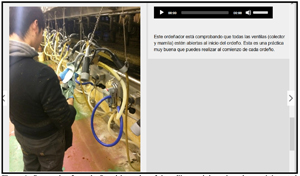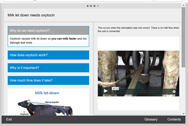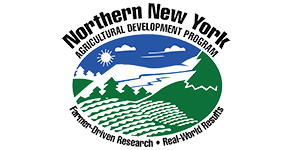
Canton, N.Y.; March 16, 2021. With direct input from 18 farms in northern New York and a grant from the Northern New York Agricultural Development Program (NNYADP), the completion rate of an alternative training system for dairy workers increased from six percent in the first year to 100 percent in year two. The project, conducted by Quality Milk Production Services (QMPS), evaluated the feasibility of e-learning modules as an alternative to face-to-face training for milker personnel.
This pilot project produced critical insight into module development, the need for ongoing learning for dairy workers, and the added value of hands-on training for the dairy industry. The report, “E-Learning Training Systems as an Educational Approach for Dairy Farm Workers on Milk Quality and Parlor Performance” is posted on the NNYADP website at https://nnyagdev.org/index.php/2020-nnyadp-projects.
An initial survey at each participating farm identified farm-specific priority issues with 93 percent of the farms identifying milking equipment operation and milking routine procedures as high priorities. This baseline survey data informed the design in 2019 of the first e-learning module focused on the seven steps in a proper milking routine and a second module, in 2020, highlighting the five basic checks of milking equipment that need to be made prior to the start of milking.
Both modules were available in English and Spanish, with video and images augmenting the text that described how to perform each task and why each check is important to the health of the cows and to the quality of milk produced.

“The testing of the 2019 module influenced the design of the 2020 module and vastly improved the response and results focused on educating the milkers on proper equipment handling,” said project leader Dr. Paul D. Virkler, DVM, a veterinarian and senior extension associate with the QMPS Canton Laboratory and Animal Health Diagnostic Center in Canton, New York.
The 2020 module included faster entry into the module, an added section outlining the major milking system components and functions with narrated video options, and an illustrated glossary. The farms participating inthe project in 2020 provided one hour of paid time for the milkers to receive the training.
“In 2020, we addressed a literacy issue by adding an audio option to have the text read aloud for two of the module’s five sections. An unexpected benefit was one Spanish-speaking employee asking to log-in to the English version to hear the text so he could improve his pronunciation of the words in English,” Virkler noted.
Spanish is the native language of 90 of the 95 milkers who participated in the e-learning pilot project in 2020. Twenty-nine percent of the milkers had had prior training on the use of milking equipment, 46 percent had not milked cows before arriving at the farm. All milkers in the project in 2020 had last received any training more than six months earlier.
“Access to strategic and focused training is an ongoing challenge in the dairy industry, even more so in 2020 with COVID-19 severely limiting in-person training events,” Virkler pointed out.
Following the e-learning training in 2020, 95 percent of the milkers indicated that they would now be able to check the milking equipment and 87 percent reported now feeling confident they could inform farm management about an equipment problem.
“Although the module results indicated the milkers had potentially gained knowledge through the training, we also wanted to know if that translated to actually performing the skills, so we piloted a model-based test in which a feature of the milking equipment specifically covered in the module was disabled,” Virkler said.
Even though the majority of milkers had potentially gained knowledge about the required skills, the hands-on testing indicated that an in-person demonstration of what to do to check the equipment was needed to enable the milkers to evaluate the equipment problem.
The research team is now considering how to best incorporate model-based testing into the e-learning educational system as a tool that farm management could use as follow-up to assure the training success in practical, hands-on application.
“This project demonstrates a need for structured training programs that support an ongoing learning culture on the farm. Providing education and feedback to milkers on a regular basis promotes learning, job performance improvement and satisfaction, can reduce employee turnover; and enhances farm efficiency and production success,” Virkler said.
Virkler would like to next develop a module that would train dairy employees to properly conduct tasks related to milking cow health.
 Funding for the Northern New York Agricultural Development Program is supported by the New York State Legislature and administered by the New York State Department of Agriculture and Markets.
Funding for the Northern New York Agricultural Development Program is supported by the New York State Legislature and administered by the New York State Department of Agriculture and Markets.
To read the full report: “E-Learning Training Systems as an Educational Approach for Dairy Farm Workers on Milk Quality and Parlor Performance”: https://nnyagdev.org/index.php/2020-nnyadp-projects